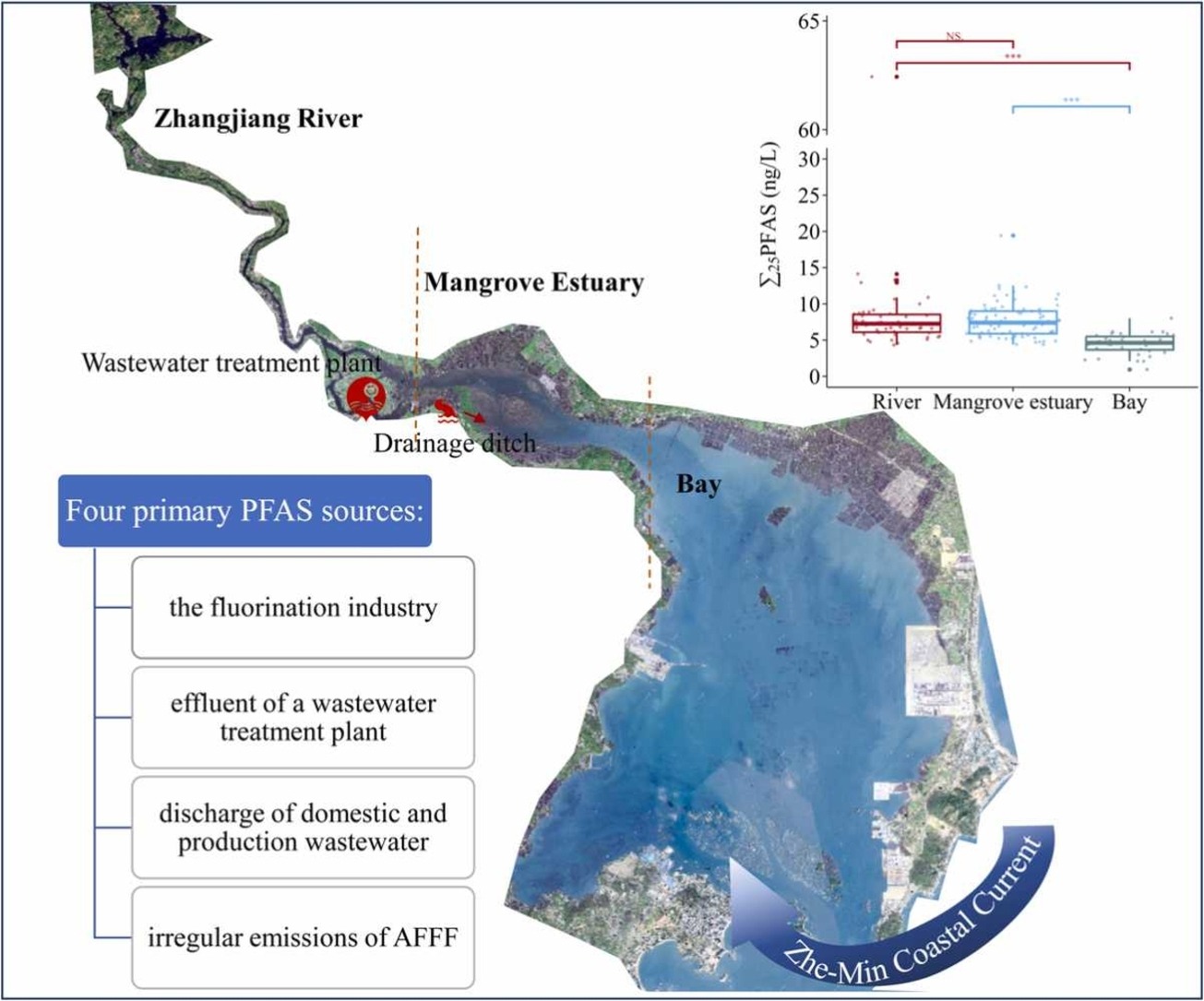Xingwei Xie, Yonglong Lu, Pei Wang, Haojie Lei, Nengwang Chen, Zian Liang, Xudong Jiang, Jialong Li, Zhiwei Cao, Jieming Liao, Kongming Li
Journal of Hazardous Materials
https://doi.org/10.1016/j.jhazmat.2023.132937
Published: 15 February 2024
Abstract
Mangrove estuaries are one of the most economically valuable and biologically diverse coastal ecosystems. However, knowledge of emerging pollutants in mangrove estuaries is limited. This study provided insight into the PFAS in a river (Zhangjiang River, ZR)-mangrove estuary (Zhangjiang River Estuary, ZRE)-bay (Dongshan Bay, DSB) continuous system in Fujian Province, China. The Σ25PFAS (sum of 25 PFAS) concentrations (0.94 ∼ 62.44 ng/L) showed a declining trend from the river to bay. The Zhe-Min Coastal Current (ZMCC) can transport an abundance of PFAS, especially PFOA, from the northern sea to southern bays, which can affect the seasonal distribution of PFAS concentrations in the DSB and result in PFOA/Σ25PFAS with a decreasing trend in the DSB (28.08%), ZRE (21.15%), and ZR (14.13%), respectively. The primary PFAS sources in this area determined by the positive matrix factor model mainly contained the effluent of the wastewater treatment plant neighboring the R2 site, discharge of domestic and production wastewater, irregular emissions of aqueous film-forming foams, and fluorochemistry industry wastewater transmitted from the ZMCC. The PFAS pollution in the mangrove creek was mainly affected by the discharge of domestic and production wastewater and presented a significant point source pollution, especially during the rainy season.
